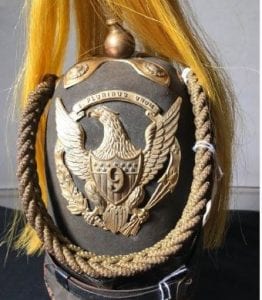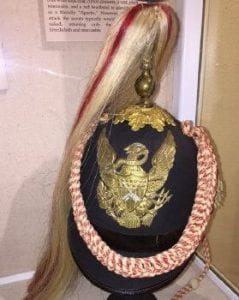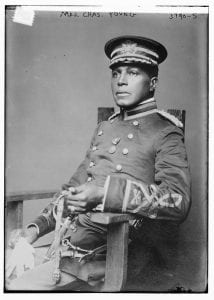July 28, 2020 recognizes the 154th anniversary of the passage of the Army Reorganization Act. This act, which reorganized the US military following the Civil War, created both the Buffalo Soldiers and Indian Scouts. Both Black and Indigenous people served in the US Armed Forces before 1866, but this act was the first time they were part of the regular army. About half of men enlisted in the United States Colored Troops, an earlier Black regiment, joined as regulars. The Act specifically dictated that Indian Scouts would be paid the same as white men doing the same job.
Buffalo Soldiers and Indian Scouts were stationed primarily in the American West. Buffalo Soldiers protected settlers and railroad expansion in the new US territories like Arizona. Indian Scouts tracked enemy targets, many of which were other Indigenous people who refused to go on to Reservations. The Scouts acted as liaisons and translators between the US and Indigenous people. Buffalo Soldiers and Indian Scouts played a key role in the Indian Wars, which is one of the longest and deadliest military engagements in US history.
Many Black and Indigenous men saw military service as a way to become upwardly mobile in US society, but despite having proven themselves again and again in battle they still faced racial discrimination. Arizona had many laws on the books that discriminated against Black and Indigenous people in housing, education, voting, marriage rights, legal protections, and public accommodations until the 1960s. Some Indigenous people thought that military service would ensure citizenship, but they were not made US citizens until 1924. Black men were made citizens by the 16th Amendment, but many states challenged Black citizenship through Jim Crow Laws like the ones mentioned above. Neither Black nor Indigenous people would be guaranteed the right to vote until 1965. Descendants of both Buffalo Soldiers and Indian Scouts have fought for generations to ensure that the sacrifices of their ancestors are properly commemorated by the United States military.
The Arizona Historical Society is honored to have collections pieces that represent both the Buffalo Soldiers and the Indian Scouts, but there are big gaps in our knowledge of these pieces: a couple of the pieces belonging to Buffalo Soldiers and Indian Scouts have known provenance, meaning we know who owned them during their service life, but many others do not. Why is this? Part of it has to do with collecting practices and the kinds of stories that were told when these objects were collected. Historians and museums tended to center stories about important Anglo men, while collections records focused on donors instead of on object provenance. The other part has to do with fame: objects that have provenance tend to have belonged to famous figures–celebrities, outlaws, politicians, and in this case, high-ranking military officials. In the case of Buffalo Soldiers and Indian Scouts, only the most famous figures are remembered by name. We’re working to fill these gaps in our knowledge and share these uncovered stories with all Arizonans! Here’s a sneak peek at one of those projects!
These uniform pieces belonged to Charles Young. Charles Young (1864-1922) was an accomplished soldier, civil rights activist, and diplomat. In addition to being the first Black Superintendent of National Parks and the first Black soldier to become a colonel, he led the cavalry charge in the Pancho Villa Expedition in 1916 and he was the commander at Fort Huachuca in 1917. He published several books and articles fighting against the widely-held idea that Black and Jewish men were unfit for military service. Poised to become a general in 1917, Young was forced to retire. Official records state that Young was placed in inactive service due to high blood pressure, but it is widely known that white officers feared upsetting the racial hierarchy by having a Black general command white troops. Even though Theodore Roosevelt, a dear friend of Young’s, tried to intervene to get Young reinstated, Young was ultimately reassigned to diplomatic work in Liberia. Charles Young died of a kidney infection in 1922 while on a mission in Nigeria. It took over a year to have his body repatriated to the United States. Young was buried with full military honors at Arlington National Cemetery.
Thanks to the University of Arizona Center for Digital Humanities for making more of our collection accessible! Stay tuned for more 3D images of collections pieces!






